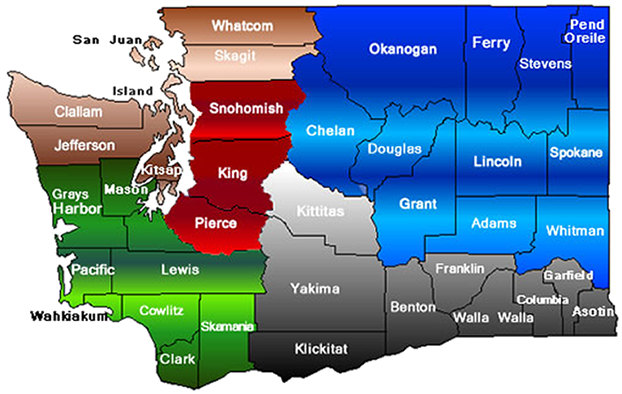Funding from the RATA (Rural Arterial Trust Account) is distributed to five regions in Washington State based on rural land area and the total number of miles of eligible roads in each region. Because of population growth and new roads that are added or removed from the transportation network from time to time, the regional distribution percentages are adjusted every biennium.
View regional descriptions by clicking your mouse on a region of the map. See text version.


